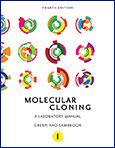
Quantifying Sex Differences in Behavior in the Era of "Big" Data.
Sign Up to like & getrecommendations! Published in 2021 at "Cold Spring Harbor perspectives in biology"
DOI: 10.1101/cshperspect.a039164
Abstract: Sex differences are commonly observed in behaviors that are closely linked to adaptive function, but sex differences can also be observed in behavioral "building blocks" such as locomotor activity and reward processing. Modern neuroscientific inquiry,… read more here.
Keywords: building blocks; sex differences; differences behavior; behavioral building ... See more keywords

Gene–Environment Interplay and Individual Differences in Behavior
Sign Up to like & getrecommendations! Published in 2018 at "Mind, Brain, and Education"
DOI: 10.1111/mbe.12158
Abstract: Individuals of the same species display remarkable variation in behavior, even in identical contexts. Increasing complexity in behavioral phenotypes brings with it an increase in individual variation in the manifestation of those phenotypes, and human… read more here.
Keywords: individual differences; differences behavior; environment interplay; gene environment ... See more keywords

Sex Differences in Behavior and Learning Abilities in Adult Rats
Sign Up to like & getrecommendations! Published in 2023 at "Life"
DOI: 10.3390/life13020547
Abstract: Laboratory rats have excellent learning abilities and are often used in cognitive neuroscience research. The majority of rat studies are conducted on males, whereas females are usually overlooked. Here, we examined sex differences in behavior… read more here.
Keywords: learning abilities; avoidance; test; differences behavior ... See more keywords

Differences in Behavior between Normal and Atopic Keratinocytes in Culture: Pilot Studies
Sign Up to like & getrecommendations! Published in 2022 at "Veterinary Sciences"
DOI: 10.3390/vetsci9070329
Abstract: Skin barrier dysfunction is important in atopic dermatitis and can be secondary to inflammation. Observation of keratinocytes in culture may show intrinsic differences. TransEpithelial Electrical Resistance (TEER) measures epithelial permeability. We cultured normal and atopic… read more here.
Keywords: normal atopic; atopic keratinocytes; differences behavior; atopic ... See more keywords